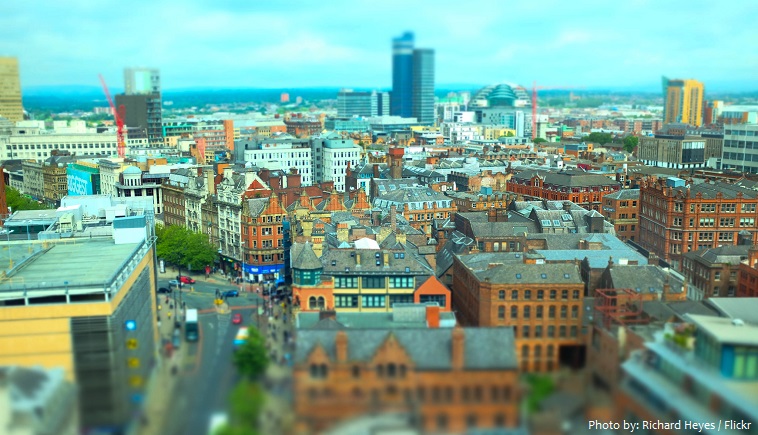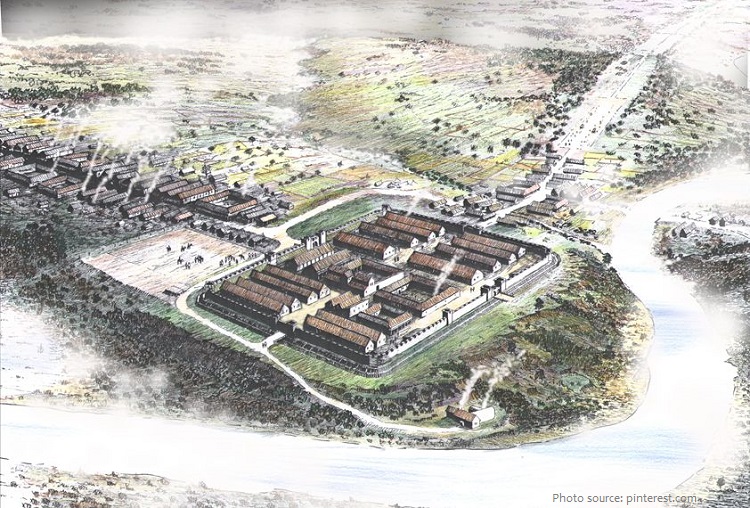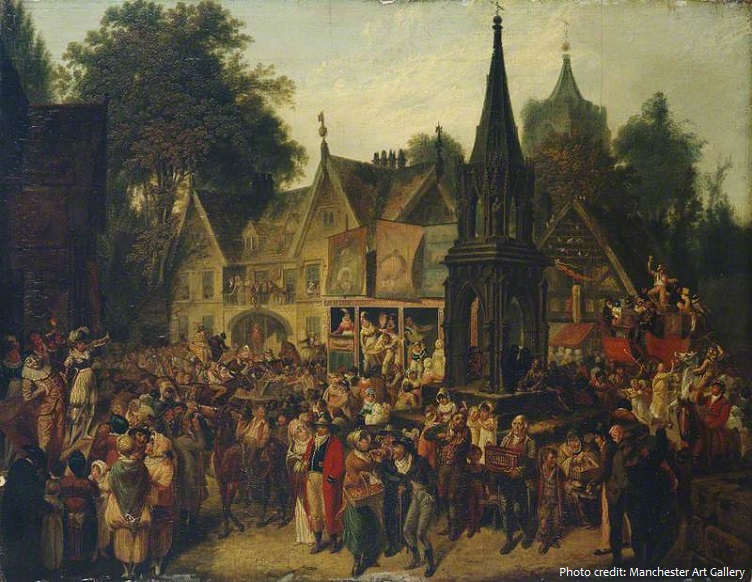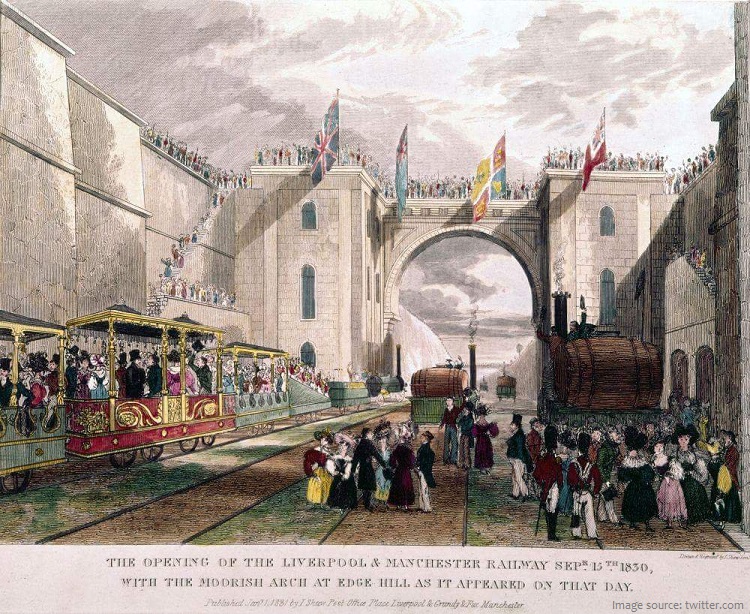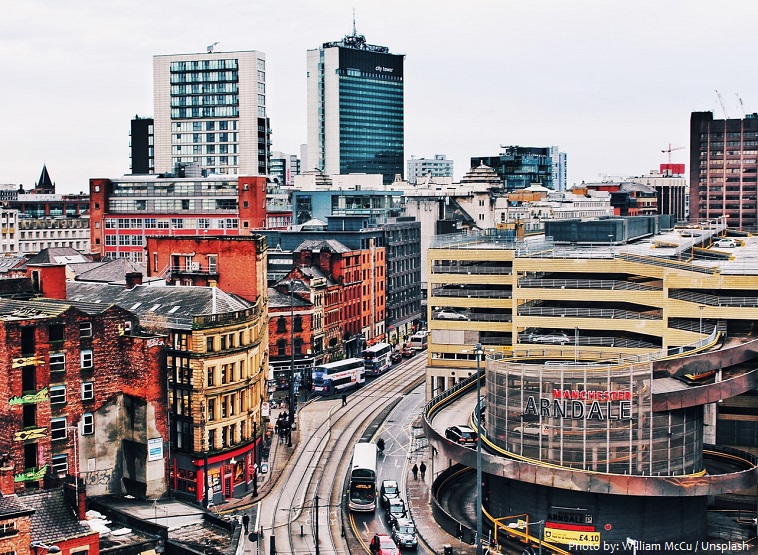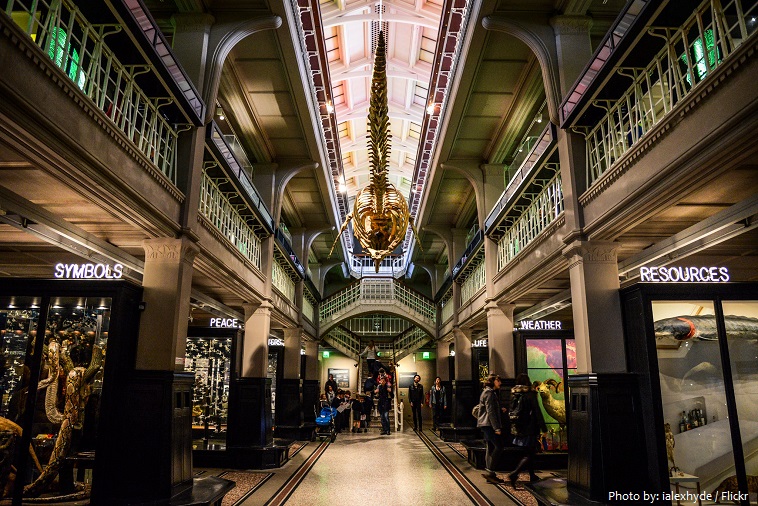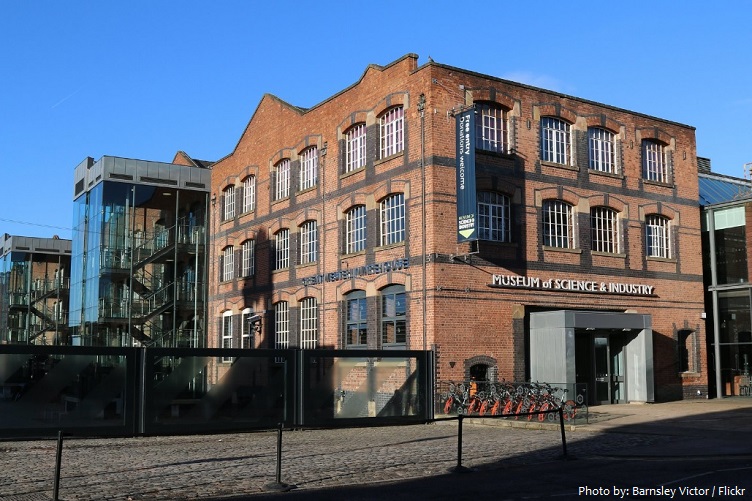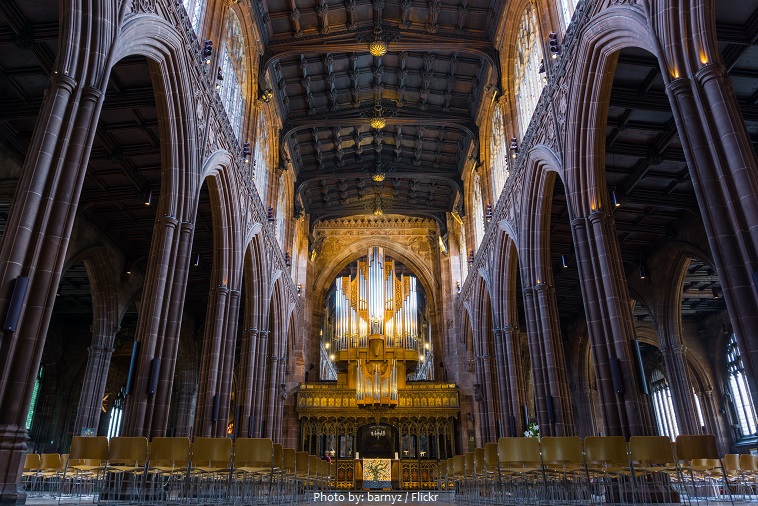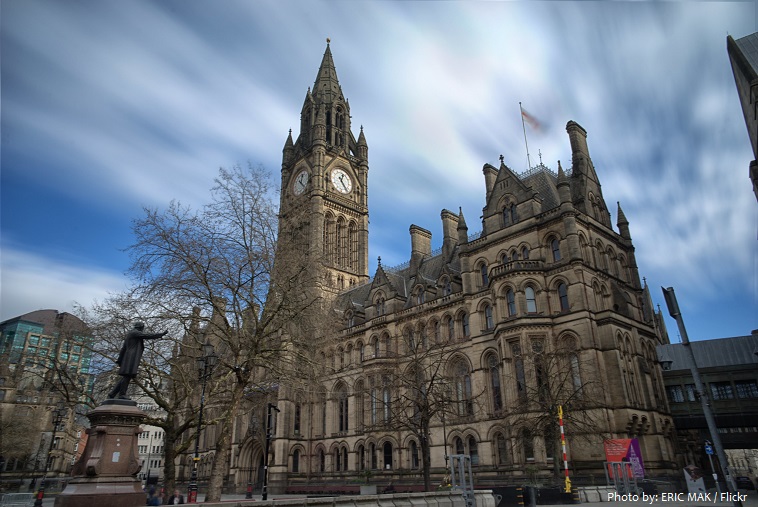Manchester is a major city and metropolitan borough in the metropolitan county of Greater Manchester urban county, northwestern England.
The city is located about 300 kilometers (190 miles) north west of the English capital, London.
As of January 2020, the population of Manchester is about 550,000 people. It lies within the United Kingdom’s second-most populous urban area, with a population of 2.9 million, and third-most populous metropolitan area, with a population of 3.4 million.
The city covers a total area of 116 square kilometers (45 square miles).
The average altitude is 38 meters (125 feet) above sea level.
The recorded history of Manchester began with the civilian settlement associated with the Roman fort of Mamucium or Mancunium, which was established in about AD 79 on a sandstone bluff near the confluence of the rivers Medlock and Irwell.
Roman occupation left no permanent imprint, except to give the modern city its name, derived from Mamucium (“Place of the Breastlike Hill”).
There is no evidence of occupation after the 4th century, and the site seems to have lain empty for 500 years.
In 919 the West Saxon king Edward the Elder sent a force to repair the Roman site as a defense against the Norsemen, and some traces of this reoccupation have been discovered.
The Norman barony of Manchester was one of the largest landholdings in Lancashire, and its lords built a fortified hall close to the church.
In the year 1222 Manchester was granted the right to hold an annual fair. In the Middle Ages a fair was like a market but was held only once a year. It would attract buyers and sellers from all over Lancashire.
During the 13th century, Manchester began its transition from village to town, and sometime before 1301 a charter was granted.
In the 17th century Manchester was famous for wool and also for cotton. From 1637 silk was woven in the town.
From the 1760s onward, growth quickened with the onset of the Industrial Revolution.
Manchester’s first cotton mill was built in the early 1780s. By 1800 Manchester was said to be “steam mill mad,” and by 1830 there were 99 cotton-spinning mills.
The world’s first modern railway, the Liverpool and Manchester, was opened in 1830, and by the 1850s the greater part of the present railway system of the city was complete.
Manchester’s unplanned urbanisation was brought on by a boom in textile manufacture during the Industrial Revolution, and resulted in it becoming the world’s first industrialised city.
The Manchester Ship Canal opened in 1894, creating the Port of Manchester and directly linking the city to the Irish Sea, 58 kilometers (36 miles) to the west.
Its fortune declined after the Second World War, owing to deindustrialisation, but the IRA bombing in 1996 led to extensive investment and regeneration.
Following successful redevelopment after the IRA bombing, Manchester was the host city for the 2002 Commonwealth Games.
Today, Manchester is the third most visited city in the UK, after London and Edinburgh.
It is notable for its architecture, culture, musical exports, media links, scientific and engineering output, social impact, sports clubs and transport connections.
Manchester Museum is a museum displaying works of archaeology, anthropology and natural history and is owned by the University of Manchester. At the heart of the university’s group of neo-Gothic buildings, it provides access to about 4.5 million items from every continent. It is the UK’s largest university museum and serves both as a major visitor attraction and as a resource for academic research and teaching. It has around 450,000 visitors each year.
The Science and Industry Museum in Manchester is a large museum devoted to the development of science, technology and industry with emphasis on the city’s achievements in these fields. There are extensive displays on the theme of transport (cars, aircraft, railway locomotives and rolling stock), power (water, electricity, steam and gas engines), Manchester’s sewerage and sanitation, textiles, communications and computing.
Manchester Art Gallery is a publicly owned art museum on Mosley Street in Manchester city centre. The main gallery premises were built for a learned society in 1823 and today its collection occupies three connected buildings, two of which were designed by Sir Charles Barry. Both Barry’s buildings are listed. The building that links them was designed by Hopkins Architects following an architectural design competition managed by RIBA Competitions. It opened in 2002 following a major renovation and expansion project undertaken by the art gallery.
Manchester Cathedral is the mother church of the Anglican Diocese of Manchester, seat of the Bishop of Manchester and the city’s parish church. It is on Victoria Street in Manchester city centre. Manchester Cathedral dates mostly from 1422 to 1506 and was raised to cathedral status in 1847.
Manchester Town Hall is a Victorian, Neo-gothic municipal building in Manchester, England. It is the ceremonial headquarters of Manchester City Council and houses a number of local government departments. The building faces Albert Square to the north and St Peter’s Square to the south, with Manchester Cenotaph facing its southern entrance.
The National Football Museum is England’s national museum of football. It is based in the Urbis building in Manchester city centre, and preserves, conserves and displays important collections of football memorabilia. The museum was originally based in Deepdale, Preston, Lancashire, but moved to Manchester in 2012.
Castlefield is an inner city conservation area of Manchester. It was the site of the Roman era fort of Mamucium or Mancunium [photo below] which gave its name to Manchester. It was the terminus of the Bridgewater Canal, the world’s first industrial canal, built in 1764; the oldest canal warehouse opened in 1779. The world’s first passenger railway terminated here in 1830, at Liverpool Road railway station and the first railway warehouse opened here in 1831. Castlefield was designated a conservation area in 1980 and the United Kingdom’s first designated urban heritage park in 1982.
Manchester’s buildings display a variety of architectural styles, ranging from Victorian to contemporary architecture. The widespread use of red brick characterises the city, much of the architecture of which harks back to its days as a global centre for the cotton trade.
Manchester has a thriving theatre, opera and dance scene, with a number of large performance venues.
The city is a UNESCO City of Literature known for a “radical literary history.”
Manchester is well known as a city of sport. Two decorated Premier League football clubs bear the city name – Manchester United and Manchester City.

